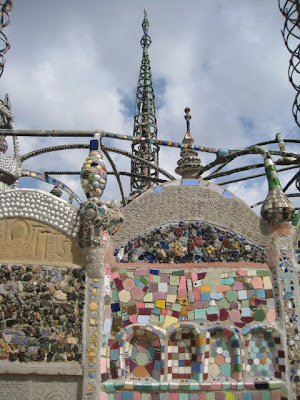Back on November 20, 2008, Edward Rothstein's review of the newly renovated National Museum of American History appeared in the New York Times. One part of his critique particularly stuck in my craw,
. . . [T]he installation of 400 objects from the museum’s collection mounted in 275 feet of display cases in the new spaces [relies more on sensation than explanation and exploration]. It is an array of curiosity cabinets loosely organized by subject, with items like an 1870s surgical set, a Kodak Brownie camera, and a set of Vietnamese manicurist’s tools. The objects fascinate, but the miscellany is so deliberate, it is as if variety itself were the subject.To the extent that Rothstein complains about the lack of information provided with objects in museums, I heartily agree. The dearth of signage trend has been noted in the National Museum of the American Indian's sculptural collage of artifacts without any notation of their origin as well as the Georgia Aquarium's over reliance on volunteer docents in lieu of any signage at all - a post-literate museum. However, I find any complaint about the diverse array of seemingly unrelated objects reveals more about the reviewer's ignorance of the history of museums than any failing on the part of the National Museum of American History. The National Museum of American History's presentation of an eclectic collection of esoterica harks back to the precursor to the museum, the wunderkammer.
Moreover, the Smithsonian Institution can be considered a Wunderkammer, the NMAH being one part of a larger, even more diverse, and in Rothstein's view incoherent, whole consisting of over 136 million objects.
Meanwhile, All Things Considered has a series about museums. First, a piece on the history of museums. The second installment focuses on the director of the Virginia Museum of Art.









